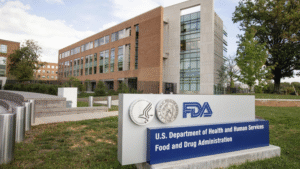Bird Flu’s Dangerous Evolution: Why Experts Warn It’s a Growing Threat to Humans is capturing global headlines in 2025, as leading scientists and public health experts raise alarms about its rapid mutation and increasing potential to infect humans. With confirmed cases in livestock and the first human fatality in Mexico, this strain of H5N1 is evolving into a virus that requires serious attention in the United States and worldwide.
Understanding What Bird Flu Is and Why It’s Evolving in 2025
Bird flu, or H5N1 avian influenza, is a highly infectious virus that primarily affects birds. In rare cases, it can spread to humans and other animals. In 2025, the virus has begun mutating at an unusual pace, leading to more frequent cross-species infections. Traditionally limited to wild birds and poultry, it has now infected mammals, including dairy cows in multiple U.S. states, signaling a disturbing shift in how the virus behaves.
This change is significant because the more the virus adapts to mammals, the closer it could get to infecting humans more easily. That’s why global health agencies are sounding the alarm.
Latest Developments: Bird Flu in Humans and Cattle
In April 2025, Mexico confirmed the first human death linked to H5N1 this year. The victim was a three-year-old girl from Durango who died of multiple organ failure caused by the virus. This tragic event highlights that bird flu is no longer a distant, animal-only concern.
Meanwhile, in the United States, H5N1 has been detected in dairy cattle in at least five states — including Texas, Kansas, Michigan, Idaho, and New Mexico. The USDA has confirmed that the virus is spreading through shared farm equipment and possibly through respiratory droplets between cows. Infected cows are being quarantined, and milk from these animals is being discarded to prevent public exposure.
Why Scientists Are Deeply Concerned About H5N1’s Mutation Potential
One of the key concerns is that the virus is just a few mutations away from being able to spread efficiently between humans. According to a 2024 study published by the National Institutes of Health (NIH), a single change in the virus’s surface protein structure could allow it to bind more easily to human cells.
This means that even a minor genetic change could transform H5N1 into a virus that spreads rapidly through human populations. That’s exactly what makes this bird flu strain a potential pandemic risk.
How the Virus Is Mutating and Crossing Species
Here’s a comparison of how H5N1 behaved before vs. how it’s acting now:
| Factor | Before 2024 | In 2025 |
|---|---|---|
| Host Range | Mostly wild birds and poultry | Now infecting cows and one human case |
| Spread Pattern | Limited to bird migration routes | Spread via farm equipment, cows, and direct contact |
| Human Risk | Rare, isolated cases | Higher mutation potential, increased exposure risk |
| Containment | Localized culling of birds | Farm-wide quarantines, nationwide surveillance |
This evolution makes early containment harder and increases the urgency of monitoring and response.
U.S. Government Response and Urgent Measures in Place
In response to these new outbreaks, the Centers for Disease Control and Prevention (CDC) and the U.S. Department of Agriculture (USDA) are taking several critical actions:
- Actively testing livestock and farmworkers in affected states.
- Imposing quarantines and culling animals where needed.
- Enhancing surveillance to track further spread of the virus.
- Initiating vaccine research in partnership with pharmaceutical labs.
Milk from infected cows is being safely discarded, and no contaminated products have entered the U.S. food supply. However, the risk to farmworkers and communities near infected farms is under close review.
How to Stay Informed and Safe from Bird Flu in the U.S.
Even though human cases are rare, the risk is real, especially for those who work around livestock or handle poultry. Here’s what you can do to reduce your risk:
- Avoid contact with sick or dead birds and livestock.
- Practice thorough hand hygiene and sanitation if you work in agriculture.
- Monitor public health updates from the CDC, WHO, and trusted U.S. news sources.
- Don’t consume raw or unpasteurized animal products.
- Stay informed on vaccine developments and local outbreak alerts.
What Makes This a Serious Health Risk for the USA
The United States has never before dealt with this type of cross-species viral behavior involving both cows and humans. Add in the virus’s high mortality rate (over 50% in past human cases worldwide), and the situation becomes one that demands vigilance.
While the U.S. government is proactively responding, the virus’s unpredictability means preparedness and public education are more important than ever.
Conclusion: Bird Flu’s Evolution Is a Warning We Can’t Ignore
Bird flu’s dangerous evolution in 2025 is not just a concern for birds — it’s an emerging public health warning for the United States and the world. With one human death in Mexico, rising infections in U.S. cattle, and the virus’s increasing ability to adapt to mammals, the window for containment may be closing.
Americans must remain aware and proactive. Continued research, farm surveillance, vaccine investment, and media transparency are critical for prevention. If there’s one lesson the world learned from COVID-19, it’s that early attention saves lives.
[USnewsSphere.com / UN]





